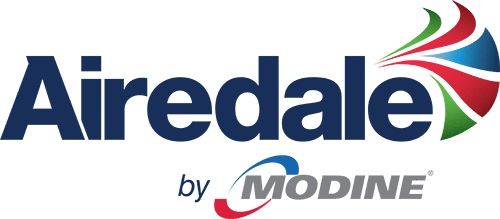Tailored Cooling Solutions: Why One-Size-Fits-All Doesn’t Fit
Today’s data centers demand more from their cooling solutions than ever before. Breakthroughs in generative AI are spiking electrical demands at data centers, and all that heat generation means that only the best cooling and monitoring solutions will do. The growing complexity of hybrid cloud configurations and HPC workloads also makes it more challenging to keep it all cool. It’s simply not realistic to expect limited off-the-shelf cooling systems to address the diverse operational, environmental, and business-specific challenges these data centers face.
Seeking out tailored solutions will pay off through years of efficient operation. Consider the essentials with this deep dive that explores why customized cooling is increasingly crucial for rapidly growing data centers.
1. The Pitfalls of Standardized Cooling Solutions
At one point, the trend was to embrace one-size-fits-all cooling solutions for data centers. It’s still a common assumption that pre-made cooling equipment is more cost-efficient or simplifies the procurement process. However, whatever you gain by going with standard cooling solutions is always offset by many drawbacks, including the following issues.
Energy Inefficiency and Wasted Capacity
Overcooling is always a risk with a standardized cooling system, leading to unnecessary spending on energy costs. Insufficient airflow, heat recirculation, and lack of cooling can lead to damage to equipment, or at least slow down operations in the most demanding data centers. Lack of modifications, due to factors like structural thermal bridging or facility layout, complicate the task of keeping the data center cool.
Lack of Accommodations for Unique Configurations
Today’s data centers feature greater rack densities and more unusual spatial configurations than ever before. Cooling solutions designed for basic server rack layouts can’t adapt to the unique arrangements required for HPC workloads and the massive data transfers they rely on.
Difficulty Adapting to Emerging Technologies
Rapid advancements in technology and evolving workloads continually challenge the effectiveness of basic cooling solutions. Only tailored cooler and chiller systems, designed with built-in flexibility, can adapt to future shifts in AI processing and other high-demand, heat-generating applications—ensuring long-term efficiency and scalability.
2. Why Customization is Critical in Today’s Data Center Landscape
High-density computing and hybrid deployments are on the rise, leading to increasingly diverse operational requirements. Standardized cooling solutions just can’t keep up. In addition to the challenges brought on by increasing rack density and GPU reliance, the limited placement options for new data centers in some areas also complicate matters of cooling. For example, AI data centers have been pushed into rural areas across the US, but some of these less developed zones lack the power supply necessary for both data processing and cooling. If there’s high demand for power in an urban area, it’s still challenging to get the necessary power for intensive standardized cooling solutions.
Efficient customized systems help overcome constraints caused by building age or layout, while solutions that can scale with ease help you adjust to varying climate challenges. All of these factors mean that tailored cooling solutions are needed to improve uptime, improve operational efficiency, and create long-term cost savings that keep your data center competitive as the industry grows.
3. Key Factors Influencing Tailored Cooling Designs
There are hundreds of factors that go into tailoring a cooling design for a high-demand data center, but these categories cover the most critical considerations.
Facility-Specific Environmental Conditions
Everything from equipment density to facility layout, existing ventilation and air exchange systems, dust from degrading building materials, and the potential for other air contamination issues during mixing can affect the cooling system of your data center. How could a standardized solution ever work with so many factors to consider within the facility itself?
External Climate Impact
Outside the data center, the air in some regions is packed with evaporated water. High humidity threatens the equipment itself while also reducing the efficiency of almost all cooling solutions. Ambient temperature extremes also affect your cooling efforts inside the facility more than you might think, especially if insulation and thermal breaks were not properly implemented during construction. On the other hand, some cooling techniques can even tap into cold external climates to help boost the heat-removing efficacy without any extra power needed.
Spatial Constraints
Many data centers are retrofit scenarios intended to reuse an existing structure, such as an empty mall or partially used office space. The spatial constraints in these projects complicate cooling solutions as well. However, new-build data centers are facing similar challenges, as increasing loads in the data hall are impacting spatial constraints outside. Ensuring the best use of available land by minimizing the heat rejection plant area and maximizing IT footprint is critical for optimizing efficiency and scalability. Workload Characteristics
Gone are the days of relatively similar workload characteristics between various data centers, varying mainly in scale. One facility may need relatively little cooling despite intensive rack densities, while others simply have 10 times as much demand for cooling due to scale and processing intensity. AI and HPC, in particular, require different cooling intensities and technologies than other types of data centers.
Sustainability and Energy Management Objectives
Standardized cooling strategies don’t take into account local, state, and federal regulations regarding energy use. They also do little to align your cooling solutions with your overall corporate Environmental, Social, and Governance (ESG) goals.
Scalability and Flexibility
Customized cooling solutions are much easier to build with future expansion and shifts in workload densities in mind. Since many of today’s multipurpose data centers are likely to become more specialized as demand grows for AI and other process-heavy services, going with a standardized cooling design could cost thousands extra when it’s time to upgrade the system.
4. Consultative Collaboration: The Foundation of Effective Customization
Building a truly customized cooling system requires close collaboration between equipment manufacturers, data center architects, and facility operations teams. Without close teamwork, it’s all too easy for details to go overlooked, therefore causing the operations team to miss out on features the manufacturers intended for them to use. The consultative process for creating these tailored cooling solutions requires the following steps:
- In-depth site assessment and initial cooling demand audits
- Detailed analysis and predictive modeling of real-time cooling loads
- Iterative design and testing stages to verify design compatibility
- Post-installation support and continuous optimization throughout the life of the cooling equipment
5. Real-World Examples and Success Stories
CyrusOne recently proved the value of tailored cooling solutions by optimizing the design of a newly built 54-megawatt data center with the help of Airedale. The transition to a waterside-optimized cooling system unlocked significant free cooling opportunities, leading to a 34% energy savings compared to the original cooling design. That’s a massive improvement, especially considering the sheer scale of this data center’s power use.
Cooperatively owned Brighton Digital Exchange specializes in colocation, leading to varying layouts and rack densities that can complicate cooling. Adding the Airedale Building Management System known as ACIS™ was key in optimizing cooling efforts across the building’s many data halls. Not only does this system automatically control both free-cooling and A/C units, but it also monitors energy usage and integrates access control systems across the facility.
Conclusion
Modern data center operations can’t evolve and grow without the support of tailored cooling solutions. Standardized systems just can’t provide the efficiency, scalability, and reliable performance that they provide. If you’re aiming to keep your data center agile and future-proof, it’s time now to upgrade your cooling equipment. Build an expert partnership to navigate these complexities before it’s too late. The demand for customized thermal management solutions will only grow, considering that recent S&P Global Ratings forecasts show that data center revenues could reach nearly $650 billion by 2028. Reach out to Airedale by Modine today to get started.





